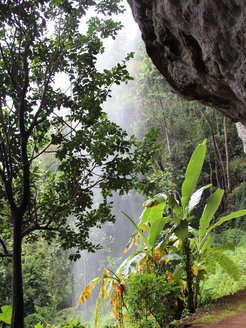Earliest evidence for human rainforest resource reliance – 36,000 years ago in Sri Lanka

Working with colleagues at the Department of Archaeology, Government of Sri Lanka and the Postgraduate Institute for Archaeology, Sri Lanka these researchers had already provided evidence for human hunter-gatherer rainforest resource reliance in Sri Lanka back to 20,000 years ago. However, in this new publication, lead author Patrick Roberts and colleagues demonstrate that this reliance extends to the earliest firmly-dated arrival of Homo sapiens on the island.
Although anthropologists and archaeologists have often considered that tropical forests are protein- and carbohydrate-poor environments, presenting difficulties of navigation and temperature control, this new research contributes to growing evidence that our species could rapidly and successfully adapt to these complex environments the world over. In particular, the earliest Homo sapiens fossils in South Asia reveal evidence for specialized use of tropical rainforests – including dedicated primate hunting – for a period of 36,000 years.
http://www.sciencedirect.com/science/article/pii/S0047248417300350
